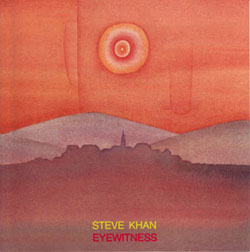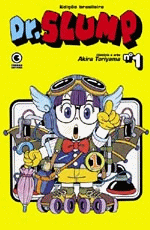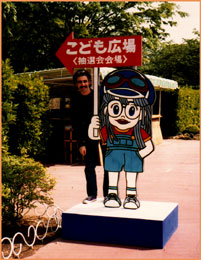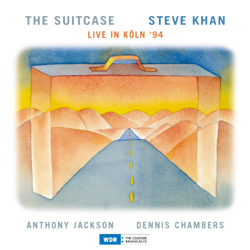

|
Soundclip:
|
| See Steve's Hand-Written Lead
Sheet |
|
Steve Khan’s "Dr.
Slump"  and its mood, its attitude, would
be very, very dreamy; almost as if Hendrix were playing some kind of a
contemporary ballad. One of the great things about this particular Strat
of mine is that, then, it had a Bill Lawrence pick-up
in the neck position which gave the tone of that guitar an additional
amount of warmth and body. In those days, and I don't know that things
have changed that much for the better, most the studios were in very old
buildings with very old electrical wiring and any guitar with single-coil
pick-ups was going to have noise and hum problems with Fender guitars
being the worst offenders. Some years later, I changed all the pick-ups
to EMGs and sadly, now I don't even know where my Lawrence pick-up is!!! and its mood, its attitude, would
be very, very dreamy; almost as if Hendrix were playing some kind of a
contemporary ballad. One of the great things about this particular Strat
of mine is that, then, it had a Bill Lawrence pick-up
in the neck position which gave the tone of that guitar an additional
amount of warmth and body. In those days, and I don't know that things
have changed that much for the better, most the studios were in very old
buildings with very old electrical wiring and any guitar with single-coil
pick-ups was going to have noise and hum problems with Fender guitars
being the worst offenders. Some years later, I changed all the pick-ups
to EMGs and sadly, now I don't even know where my Lawrence pick-up is!!!Like many of the tunes of that period, this one was born of just sitting around my apartment and improvising by myself. In this case, the first thing that came to me was the line you now see at [I] which sets the mood and the tone of the piece. Harmonically speaking, it is the simple movement back and forth between Emaj7 and Amaj7, Imaj to IVmaj nothing more, nothing less. For as long as I can remember, Anthony and I have had arguments about this tune, and he has gone as far as to say, "I just don't understand what this is!" I am usually only able to respond by telling him that whatever it is that he has been playing, that's the right thing! What's so wonderful about Anthony, even if he didn't like nor 'understand' this piece, he played musically and beautifully. The principal guitar line sounds wonderful with just long and simple whole note roots underneath with the motion of the guitar line and Steve's drums and Manolo's percussion. When Anthony finally joins me and doubles the line, we're ready to move forward. As we arrive at the section I've labeled [I2], chords are introduced for the first time. The maj7(9) voicings are exactly the same for both the Emaj7 and Amaj7 chords. And, true to my philosophy, the roots are left to the bass and Anthony. In playing these very lush voicings, as the harmony rings out, here I introduce a gentle touch of tremolo bar. Never too much just enough to cause a dip in the pitch which for me makes it a most romantic device.  The melody, which finally appears at letter [A],
is a rather simple and repetitive phrase. It is memorable, but allows
great freedom in its interpretation. The guitar fingerings for the melody
alternate between a position for D# minor pentatonic(D#, F# G#, A#, C#),
though an A# is never played, and this alternates with the C# minor pentatonic(C#,
E, F#, G#, B) serving both the Emaj7 and Amaj7 sonorities. Both these
fingerings give rise to clear Hendrix-derived double-stops, but those
are mostly played in the C# minor pentatonic fingering which is located
at the 9th-fret. Though this 'style' is perhaps most associated with Jimi
Hendrix, I tend to associate it with singer/guitarist/songwriter Curtis
Mayfield, formerly of the Impressions, whose playing had a tremendous
influence on me. The melody, which finally appears at letter [A],
is a rather simple and repetitive phrase. It is memorable, but allows
great freedom in its interpretation. The guitar fingerings for the melody
alternate between a position for D# minor pentatonic(D#, F# G#, A#, C#),
though an A# is never played, and this alternates with the C# minor pentatonic(C#,
E, F#, G#, B) serving both the Emaj7 and Amaj7 sonorities. Both these
fingerings give rise to clear Hendrix-derived double-stops, but those
are mostly played in the C# minor pentatonic fingering which is located
at the 9th-fret. Though this 'style' is perhaps most associated with Jimi
Hendrix, I tend to associate it with singer/guitarist/songwriter Curtis
Mayfield, formerly of the Impressions, whose playing had a tremendous
influence on me.Although the piece seems to be able to sustain itself with these three initial sections, I quickly realized that it needed at least one more section to give this Imaj-IVmaj motion a release. And so, quickly at one rehearsal, I made-up the small 8-bar section which is now labeled as [B]. Again, each voicing, as it rings out, is accompanied by a gentle tap of the tremolo bar. On the recorded version you will the entrance of an extra set of voicings performed with the Strat(w/ the tremolo bar) and a volume pedal as an overdub. The solo section, [C], again utilizes the motion, back-and-forth, between Emaj7 and Amaj7, but here, with only Anthony's bass for accompaniment, the freedom I experience is tremendous. One's harmonic imagination can really go as far as you would allow it. Some simple ideas I know that I employed would be to, in the 2nd bar of the phrase, make the Emaj7 become a E7(alt.) as it pulls toward the Amaj7 chord. One could also insert the notion that there could be a B7(alt.) chord in bar 4 of the phrase to occasionally bring us back to Emaj7. If you were to do this, you could also employ any and all of the traditional substitutions, including the b5(ii-V) substitute of Cm7-F7 as well as other ideas. You will also hear that I employed the Lydian sound, with the occasional A#, which added to the spacey quality and the sense of romance.  As a cue out of the solo, I simply expand the
harmony and intensity by playing chordal passages which takes us, on cue,
to [I3] and then [B2] appears as a release.
From here, we D.S. back to a restatement, though even looser, of our melody
at [A]. which is played as one full 16-bar section before
we take the coda. When we arrive [I4], the coda, it sounds
most familiar, very much like [I2], because we are still
employing the motion from Emaj7 to Amaj7. However, a harmonic surprise
awaits us as bar 7 arrives. Here we would have expected to hear another
Amaj7 chord, but we are greeted by the simple change to Am7(9). It's the
first time a minor chord has appeared anywhere in the tune. This is actually
one of my favorite devices, it's simple but most effective, and establishes
a new harmonic motion: Emaj7 to Am7.
As a cue out of the solo, I simply expand the
harmony and intensity by playing chordal passages which takes us, on cue,
to [I3] and then [B2] appears as a release.
From here, we D.S. back to a restatement, though even looser, of our melody
at [A]. which is played as one full 16-bar section before
we take the coda. When we arrive [I4], the coda, it sounds
most familiar, very much like [I2], because we are still
employing the motion from Emaj7 to Amaj7. However, a harmonic surprise
awaits us as bar 7 arrives. Here we would have expected to hear another
Amaj7 chord, but we are greeted by the simple change to Am7(9). It's the
first time a minor chord has appeared anywhere in the tune. This is actually
one of my favorite devices, it's simple but most effective, and establishes
a new harmonic motion: Emaj7 to Am7.We then move ahead with harmonic progression continuing. Letter [D] is offered as a long, long build, or crescendo which is reached by creating more and more harmonic activity, coupled with more and more motion from Anthony, Steve, and Manolo. When I feel the we are reaching a peak moment, I give the cue for us to move ahead and play [I3]. Of course, on the recorded version, this never happens because we hadn't prepared the piece to this level yet. It is precisely at this moment where the arrangement you now see becomes a hybrid of what we improvised at the session and how we used that 'accident' as regular part of the tune. Please allow me to explain. Letter [E], on the recorded version, was actually a spontaneous improvisation that took place on a take which we did not end-up using. A portion of Anthony's 'solo' from the alternate take was later spliced onto the performance we had chosen. A decision which Anthony has never been particularly happy about, but Steve Jordan and I loved it so much that we wanted everyone else to hear it too. Otherwise, the tune would have simply faded out at [D] for its ending. For those of you who own the "EYEWITNESS" recording, if you listen carefully to this section which closes the piece, you can hear that Steve Jordan actually stops playing, because he felt the take was over. He got up and walked away from his drums, while Manolo and I continued to accompany Anthony, who probably assumed that what we were playing would never be used nor heard by anyone. Then, sensing the moment, Steve Jordan began to walk back to his drums, but just as he got there and began to join us, Anthony thrashed at the strings on his bass, and the moment was gone! Fortunately, engineer Doug Epstein never stopped rolling the tape and the moment was captured. In live performance, the bass solo at [E] is preceded by [I3]. [E] is also a section whose goal is to build and crescendo until a cue is given by one of us and it then that we play the brief [Tag] at [I5]. In the last bar, bar 8, there is a brief ritard with a pause on the last note, the F# before the tune ends on an Fmaj7(6/9) voicing. Again, this is the ending to an arrangement which only arrived by preparing the piece for live performances. Sadly, none of the tunes which appear on the "EYEWITNESS" recording had endings, that's just how loose things were at that time. Over the many years that have passed since 1981, I have been asked about the sound that I used on this tune and the "EYEWITNESS" album in general. The fundamental guiding principle for me, after the Columbia years(1977-1979) was to go back to a more pure and simple guitar sound. In essence, that was to be a Gibson ES-335 guitar played direct into an amp, and with a little reverb for treatment. Of course, as the music developed from 1981 forward, I had to be more flexible about that, and a Fender Stratocaster appeared on tunes like this one. As the music for this particular album evolved, it just seemed that certain sections needed a little something extra, and so, on this album, that sound was produced with the help of the BOSS Flanger(BF-2). It was a rather primitive sounding effect in mono, but people seemed to respond to it. If you read below about the performance of "Dr. Slump" on the "THE SUITCASE" from 1994, the major sonic difference, apart from the fact that I had to play it on my Gibson 335 as I couldn't afford to travel with two guitars, is that then I had graduated to what became my true sonic voice, where effects are concerned, the Ibanez Digital Chorus/Flanger(DCF-10) which I have written about extensively at the EQUIPMENT page here. Though I've stated this before, one of the most difficult things after all the stages of composing an instrumental piece of music are completed is to give it a title. In the end, I think that it really is best to try to come up with a title that is not frivolous, silly, or stupid, because you have to live with that forever. Of course, a title can have humor to it. The title for this tune, "Dr. Slump," in 20/20 hindsight, does not fit the mood of this piece and I regret this title. I've always been a fan of graphic design and during the years between '77-'85 when I was able to visit Japan often, I began to collect these little comic books which were titled, "Dr. Slump." I believe at that time that it had also become a popular children's cartoon show on TV. Of course, not knowing the language I had no idea what these books were about and knew nothing of the characters. It just seemed so strange to me that any character's name could actually be 'slump' because of the negative associations we, as North Americans, have with this word. For me, I immediately think of a batter in baseball going into a hitting 'slump.' So, that's where the title came from. As always, thanks so much for your visits to KHAN'S KORNER 2 and for expressing your thoughts and opinions in our Guestbook and via personal e-mails. We greatly appreciate your support for this site. For those of you heading back to school, college, here's wishing you a great year! Addendum: With the release in 2008 of "THE SUITCASE" a double live CD with Anthony Jackson and Dennis Chambers recorded in Köln, Germany on May 17th, 1994, originally for a WDR radio broadcast, I believe that it becomes necessary to revisit the analysis pages related to the 9 original tunes which appear.  Yes, for the tunes which appeared on the original "EYEWITNESS" recording from 1981, some 13 years had passed, but the performances you now hear represent the growth of the music through live playing and improvising. In most cases, what you now hear on this CD will be much closer to the lead sheets you've been viewing since the launching of the website in September of 1998. Yes, for the tunes which appeared on the original "EYEWITNESS" recording from 1981, some 13 years had passed, but the performances you now hear represent the growth of the music through live playing and improvising. In most cases, what you now hear on this CD will be much closer to the lead sheets you've been viewing since the launching of the website in September of 1998.With the rather poor finances of this tour, and any number of other European tours as well, how very much I miss having one of my Strats along for the ride - if only for an appearance on this tune! I have to admit that if this had been a multi-track recording, there is no question that I would have 'broken the purity' of the totally trio atmosphere and overdubbed the Strat with my whammy-bar and tremolo arm to sweeten all the long chords. But, I did not have that option. The piece, in 'live' performance, is far more structurally evolved than the original version. But the arc of the performance is very much the same. It remains so strange to me that Anthony can openly express to me that he just doesn't 'get' what this tune is supposed to do - as it meanders between I-major to IV-major. And then, after so much time spent in that zone, finally, it changes to I-major to iv-minor. It's so simple. My response to Anthony's queries as to "Why are we playing this tune?!?!?!" remain the same. "I simply like the mood that these harmonic movements create." Then I simply beg him to please just play it. I don't know that all my begging will ever see this piece played again! I also really like the addition of the power chord section which appears only after the long crescendo of Emaj7 to Am7 has reached its peak. This, for me, is a great addition to the original version!!! What do you think?
|